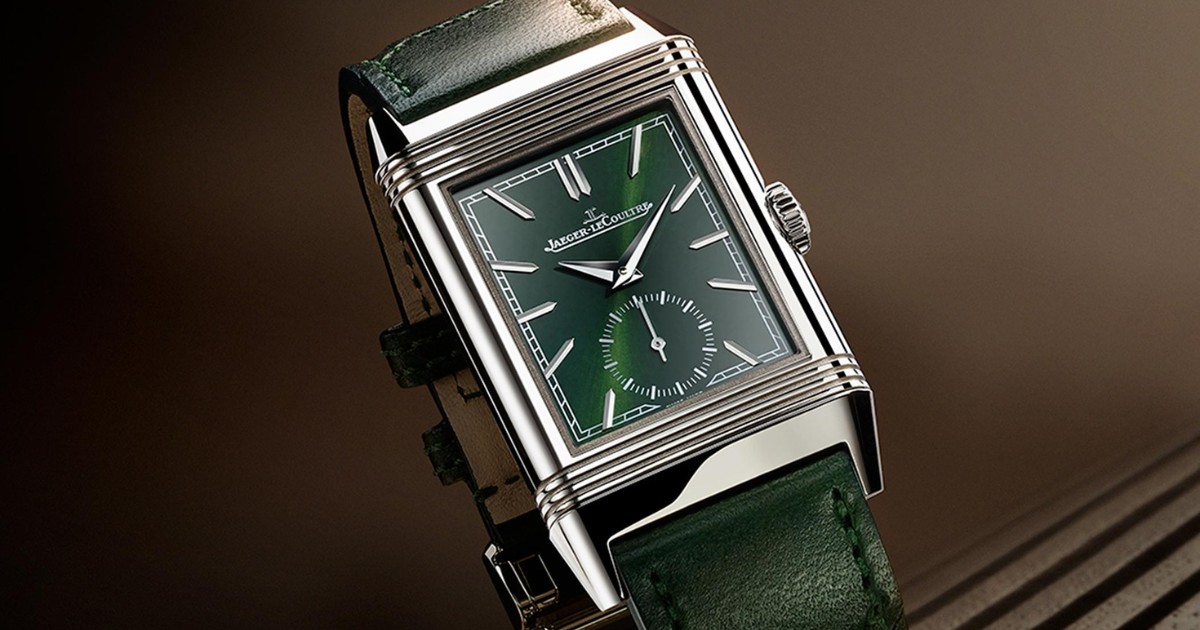Brands History
Exploring the Jaeger-LeCoultre Reverso Heritage
Jaeger-LeCoultre is a renowned Swiss luxury watchmaker with a rich history dating back to 1833. It was founded by Antoine LeCoultre in the Vallée de Joux, known for its expertise in horology. Initially focusing on developing precise watchmaking tools and movements, the company expanded into creating complete timepieces under the leadership of Antoine’s grandson, Elie LeCoultre.
In 1903, Jaeger-LeCoultre formed a partnership with Edmond Jaeger, a Parisian watchmaker, leading to the creation of Jaeger-LeCoultre as we know it today. This collaboration resulted in the production of ultra-thin movements and innovative designs, setting the brand apart in the luxury watch industry.
One of Jaeger-LeCoultre’s most iconic and enduring collections is the Reverso. Introduced in 1931, the Reverso was originally designed for polo players who needed a watch that could withstand the rigors of their sport. The defining feature of the Reverso is its reversible case, which can be flipped to protect the dial from potential damage.
Over the years, the Reverso collection has evolved, showcasing a blend of art deco aesthetics, technical prowess, and timeless elegance. It has become a symbol of Jaeger-LeCoultre’s craftsmanship and innovation. The collection includes a variety of models, from simple time-only watches to highly complicated pieces featuring functions like dual time zones, chronographs, and moon phases.
The Reverso’s significance in Jaeger-LeCoultre’s history lies not only in its innovative design but also in its cultural impact. It has remained a beloved and iconic timepiece, attracting collectors and enthusiasts worldwide. The brand continues to innovate within the Reverso line, introducing new materials, movements, and design elements while staying true to its heritage and legacy of excellence.
The Origins of the Reverso
The story behind the creation of the Reverso is both practical and innovative, reflecting the needs of the time and the ingenuity of its designers. In the 1930s, polo was a popular sport, and polo players faced a common problem: their watches were prone to damage during matches. Argentinean polo players, who were among the world’s best at the time, were particularly influential in prompting the creation of the Reverso.
César de Trey, a Swiss businessman and watch distributor, visited India where he witnessed a British officer playing polo. The officer complained about the fragility of his watch after a polo match. Inspired by this, de Trey approached Jacques-David LeCoultre, then head of LeCoultre & Cie, to create a watch that could withstand the rigors of polo while maintaining an elegant appearance off the field.
Jacques-David LeCoultre then collaborated with French engineer René-Alfred Chauvot to design the Reverso. The innovative solution they came up with was a case that could be flipped, protecting the delicate watch face from impacts. This reversible case was a groundbreaking design, allowing the wearer to have a functional sports watch on one side and a stylish timepiece on the other.
The name “Reverso” itself is derived from the Latin word “revertere,” meaning “to turn back.” This name perfectly encapsulates the watch’s unique feature of being able to flip and reverse its case.
The design inspiration for the Reverso also drew from the art deco movement of the time, characterized by geometric shapes, sleek lines, and elegant simplicity. This influence is evident in the clean, rectangular case and the classic dial designs of the Reverso.
The Reverso’s reversible case not only provided practicality for polo players but also became a symbol of innovation and craftsmanship in the watchmaking world. It remains an iconic and highly sought-after timepiece, admired for its historical significance, functional design, and timeless style.
Iconic Design Features
Art Deco design elements play a significant role in the aesthetics of the Jaeger-LeCoultre Reverso, contributing to its timeless appeal and elegance. Here’s a detailed look at some of these elements:
- Geometric Shapes: Art Deco is characterized by geometric shapes such as squares, rectangles, circles, and triangles. The Reverso’s case is typically rectangular, reflecting this geometric influence. The clean lines and symmetrical layout of the dial and case are in line with Art Deco principles.
- Symmetry and Balance: Art Deco emphasizes symmetry and balance in design. The Reverso’s dial often features a balanced arrangement of elements, such as Arabic numerals or hour markers, sub-dials for additional functions like a second time zone or small seconds, and decorative motifs like guilloché patterns or sunburst finishes.
- Minimalist and Elegant: Art Deco design is known for its minimalist yet elegant approach. The Reverso embodies this with its understated dial designs, refined hands, and subtle use of color. The overall look is sophisticated and timeless, suitable for both formal and casual occasions.
- Decorative Details: Art Deco often incorporates decorative details such as engraved patterns, intricate textures, and decorative motifs. The Reverso showcases these elements through its case-back, which is often used as a canvas for personalized engravings, artistic designs, or even gemstone settings. This allows for a high degree of customization and personalization.
Now, let’s delve into the unique case flipping mechanism of the Reverso:
The Reverso’s case flipping mechanism is a marvel of engineering and ingenuity. It consists of a hinge mechanism that allows the case to be flipped and secured in place, revealing the solid metal case-back or a personalized engraving. The hinge is robust yet precise, ensuring smooth operation while maintaining the watch’s integrity and water resistance.
This flipping mechanism serves both a practical purpose, as it protects the watch crystal during physical activities like polo, and a symbolic one, allowing wearers to personalize their timepiece and express their individuality.
Speaking of customization and personalization options for the Reverso:
Jaeger-LeCoultre offers a range of customization and personalization options for the Reverso, making each watch unique to its owner. Some of these options include:
- Engraving: The case-back of the Reverso can be engraved with personalized messages, initials, monograms, or even artistic designs. This adds a sentimental value and makes the watch a meaningful keepsake.
- Gemstone Settings: For those seeking a touch of luxury, Jaeger-LeCoultre offers Reverso models with gemstone settings on the case or dial. Diamonds, sapphires, and other precious stones can be used to create stunning and eye-catching designs.
- Dial Variations: The Reverso collection includes a variety of dial designs, from classic to contemporary. Customers can choose dials with different colors, finishes, and complications to suit their preferences and style.
- Straps and Bracelets: The Reverso can be paired with various strap options, including leather straps, metal bracelets, or even fabric straps. This allows for further customization and personalization based on comfort and aesthetic preferences.
Overall, the combination of Art Deco design elements, the unique case flipping mechanism, and extensive customization options make the Jaeger-LeCoultre Reverso a versatile and highly desirable timepiece for watch enthusiasts and collectors alike.
The Reverso Through the Ages
The Jaeger-LeCoultre Reverso collection has evolved significantly over time, with various models, complications, and design variations introduced to cater to different tastes and preferences. Here’s a look at the evolution of Reverso models and some notable collaborations and special editions:
- Original Reverso (1931): The original Reverso was designed for polo players, featuring a reversible case to protect the watch crystal during matches. It had a simple yet elegant design with Arabic numerals and a small seconds sub-dial.
- Reverso Grande Taille (1991): Introduced in the 1990s, the Reverso Grande Taille featured a larger case size to appeal to modern preferences for bigger watches. It retained the classic Art Deco design elements while offering a more contemporary look.
- Reverso Duetto (1997): This model introduced the dual-face concept to the Reverso collection, with a reversible case that reveals a different dial on each side. It allowed wearers to switch between a more formal and a more casual look.
- Reverso Squadra (2006): Departing from the traditional rectangular case, the Reverso Squadra models featured a square case with sportier aesthetics. They were designed to appeal to a younger, active audience while maintaining the essence of the Reverso heritage.
- Reverso Tribute Collection (2011 onwards): The Tribute collection pays homage to the original Reverso design while incorporating modern innovations and materials. It includes models such as the Reverso Tribute Duoface, Tribute Moon, Tribute Gyrotourbillon, and Tribute Small Seconds, showcasing a blend of classic elegance and technical excellence.
Notable Collaborations and Special Editions:
- Reverso for Art Deco Lovers (2012): Jaeger-LeCoultre collaborated with French artist Manolo Valdés to create a limited edition Reverso featuring his artwork inspired by Art Deco motifs. It combined horological craftsmanship with artistic expression.
- Reverso by Christian Louboutin (2016): In collaboration with renowned shoe designer Christian Louboutin, Jaeger-LeCoultre created a series of Reverso watches with vibrant colors, textured dials, and custom straps, reflecting Louboutin’s signature style.
- Reverso One High Jewelry (2017): This special edition Reverso was adorned with exquisite gemstones and intricate jewelry craftsmanship, showcasing the brand’s expertise in haute horlogerie and luxury aesthetics.
- Reverso Tribute Nonantième (2021): Celebrating the 90th anniversary of the Reverso, Jaeger-LeCoultre released the Reverso Tribute Nonantième, featuring a moon phase complication and a unique day counter, paying tribute to the original Reverso’s iconic design while incorporating modern functionalities.
These collaborations and special editions highlight Jaeger-LeCoultre’s creativity, innovation, and commitment to pushing the boundaries of watchmaking while honoring the heritage and legacy of the iconic Reverso collection.
Conclusion
The Jaeger-LeCoultre Reverso remains a coveted timepiece in today’s market due to its blend of timeless design, historical significance, innovative features, and cultural impact. Its ability to appeal to a wide range of tastes and preferences, from classic enthusiasts to modern trendsetters, ensures its enduring popularity and status as a symbol of horological excellence and craftsmanship.





